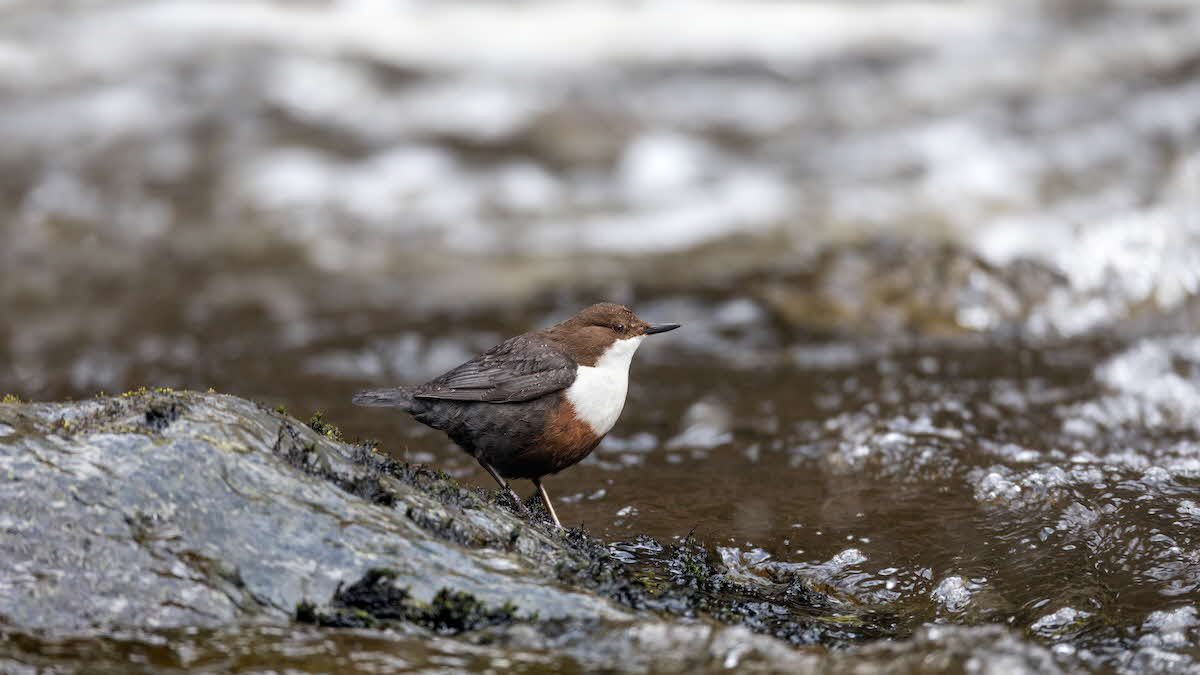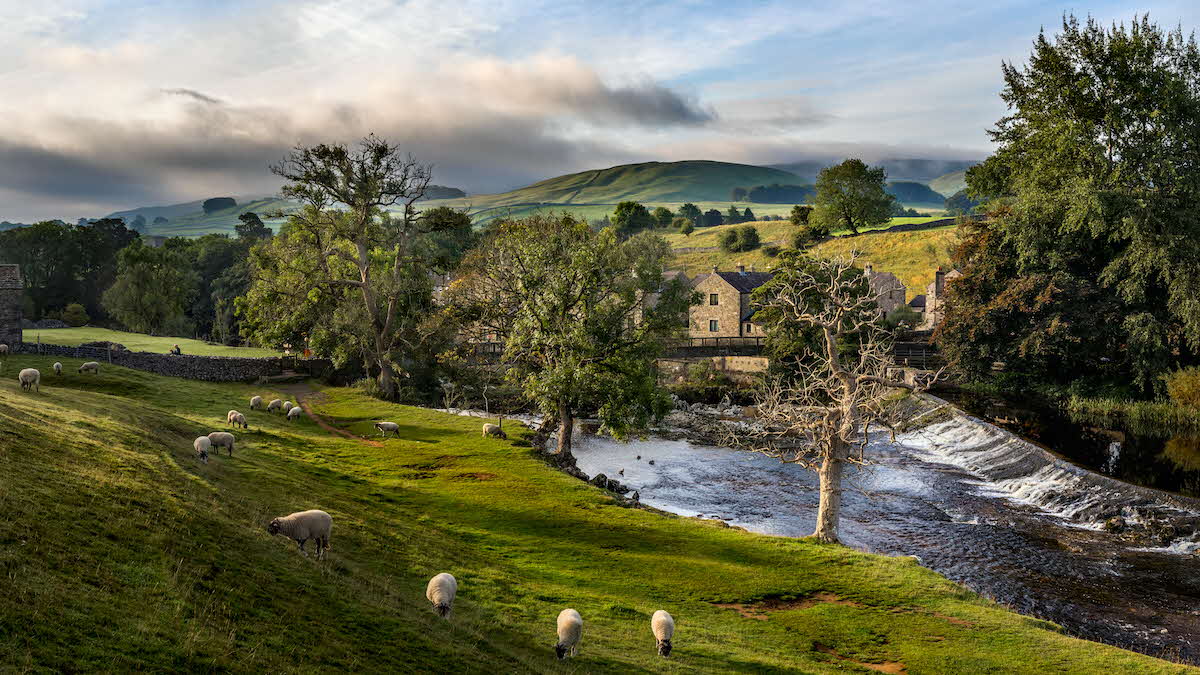Top nature campsites
You’ll be amazed at the variety of animals to spot on some of our Club campsites
View our top nature campsitesDavid Chapman reflects on the idiosyncratic ‘dipper’ – a bird that has adapted to life both above and below the water
 Notice the ginger-brown belly
Notice the ginger-brown belly
The dipper is the one creature responsible for my interest in nature. My parents used to stay at the same Certificated Location in the Yorkshire Dales almost every weekend when I was young. The site was on the banks of a river and I would wander out every morning with my binoculars hanging like a lead weight on a thin leather strap around my neck.
As I strolled along the river there were four bird species that would always brighten my day. A kingfisher would occasionally burst past in a flash of blue, the grey heron was much more languid in flight and on occasion would wade out into the river in plain sight, while I spotted plenty of grey wagtails on the rocks and river banks. But it was the dipper that got me most excited.
The dipper is a wonderful example of evolution – if there is a niche to be filled then nature will fill it, and sometimes in the most incredible ways. Once upon a time a blackbird-like animal spotted something to eat in the water, so it dived in to get it. This bird thrived and passed on its genes to the next generation.
So we arrive at the bird we know today, which not only gathers most of its food from underwater but has developed several adaptations and skills along the way. Its wing muscles are much stronger than a land bird of similar size (and the wings themselves are short for underwater swimming); its blood contains more haemoglobin, which carries extra oxygen to power its muscles; it has more feathers to keep it insulated and these feathers have greater water resistance; it has flaps which close over its nostrils when it submerges; and its eyes feature extra-strong muscles that can alter lens shape to counteract the refraction of light below the surface.
Despite all these amazing adaptations, whenever I speak to people about dippers their first question is, “Why do they bob up and down all the time?” The simple truth is that nobody knows, though there is plenty of conjecture. It’s possible that changing head position regularly – just as an owl or a parrot might do – gives them a better view of their surroundings. Another suggestion is that their behaviour acts a form of camouflage, though some argue that it makes them more visible!
I have noticed that many birds in fast-flowing river habitats do the same thing – pied wagtails, grey wagtails and common sandpipers also bob up and down, so maybe it’s a form of communication in an environment in which it can be too noisy to use calls. I am quite certain that dippers bob in response to each other – perhaps it’s for the purpose of bonding or warning off a competitor.
 The River Wharfe is good for dipper spotting
The River Wharfe is good for dipper spotting
The dipper is the only aquatic songbird in Britain, and it has a lovely voice which it uses to establish its territory from mid-winter through spring. It is an early nester – many birds lay their first batch of eggs in March – and, if all goes well, it will have a second brood in summer.
With all those hungry mouths to feed, the dipper needs to be adept at finding food – and this is where it shows off its amazing skills.
The best place to watch a dipper diving for its supper is from a bridge over a river.
The dipper has a couple of strategies for entering the water. Often it will just walk in, but sometimes it will jump off a rock and swim on the surface for a while. Facing upstream, it then ducks its head underwater, the current assists it slightly with downward pressure. It uses its wings as paddles and essentially ‘flies’ under the water until it reaches the bottom, where it scrabbles around in the gravel looking for prey. Every so often the dipper relaxes its muscles and drifts backwards downstream before flapping again to reach the riverbed in a different position.
Its eyesight underwater is very good and it knows exactly what to look for. Last year I saw a dipper bring a caddis fly larva to the surface – this larva encases itself in a protective tube covered in bits of stone and debris for camouflage. The dipper beat it against a rock a few times before eating it. Soon after, the bird went back into the water at exactly the same spot, and within a couple of seconds had emerged with a second larva. The same dipper found stonefly larvae and very small fish – the dipper’s diet also includes tadpoles, shrimps, snails, mayfly and dragonfly larvae.
Dippers are a great subject for anyone developing an interest in birdwatching. They spend their whole year on fast-flowing rocky rivers and are common in Wales, Scotland and the north and west of England. Their predictability makes them relatively easy to find and once located they a joy to watch.
These Club campsites are in the heart of dipper country.
For the latest details and opening information for these sites, see camc.com

Every month I will show you a photo of something from the natural world. It might be a close-up, or a subject that is difficult to identify. All you have to do is figure out what it is! Here is this month’s photo; no clues or prizes – it’s just for fun. I will give you the answer next month – but if you can’t wait, log in to the Digital Magazine app.
The subject of September’s mystery photo was: a pheasant.